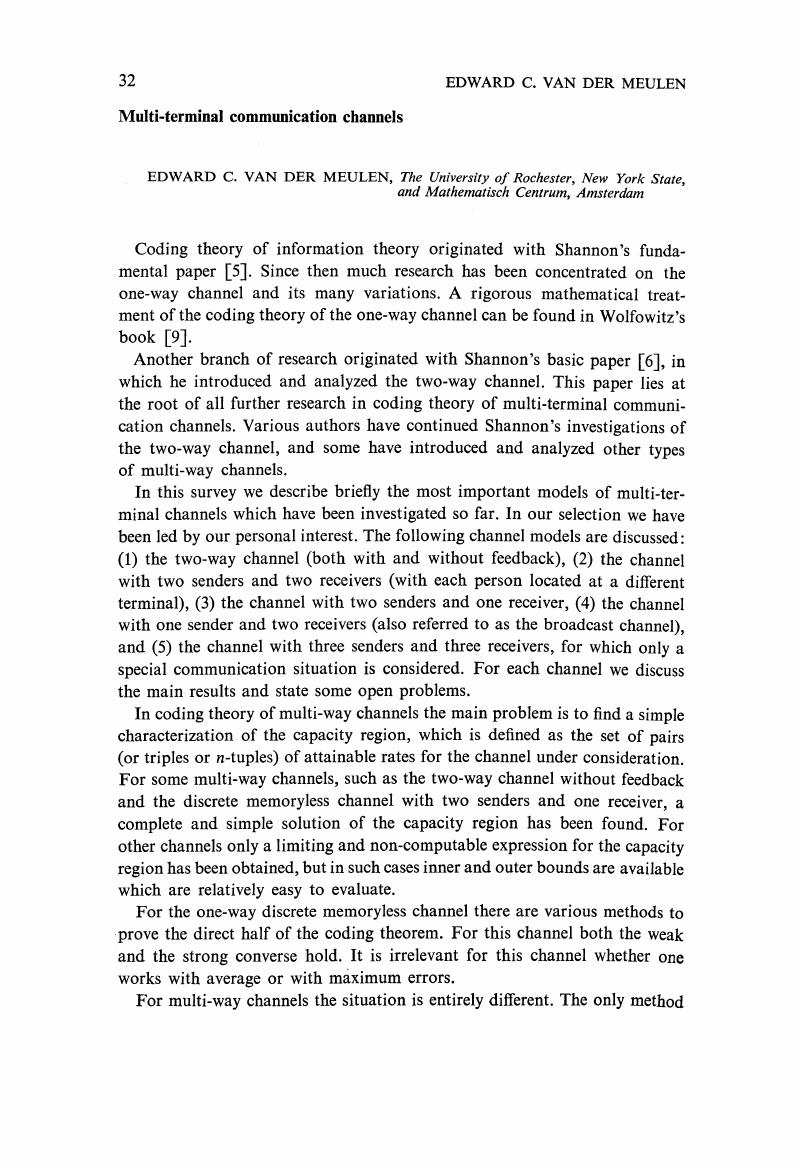Crossref Citations
This article has been cited by the following publications. This list is generated based on data provided by Crossref.
van der Meulen, E.
1977.
A survey of multi-way channels in information theory: 1961-1976.
IEEE Transactions on Information Theory,
Vol. 23,
Issue. 1,
p.
1.
Gel'fand, S. I.
and
Prelov, V. V.
1980.
Multiple-user communication.
Journal of Soviet Mathematics,
Vol. 13,
Issue. 3,
p.
386.
Renk, T.
Jaekel, H.
Kloeck, C.
and
Jondral, F. K.
2009.
General expression of outage probability in cooperative networks.
European Transactions on Telecommunications,
Vol. 20,
Issue. 6,
p.
537.



